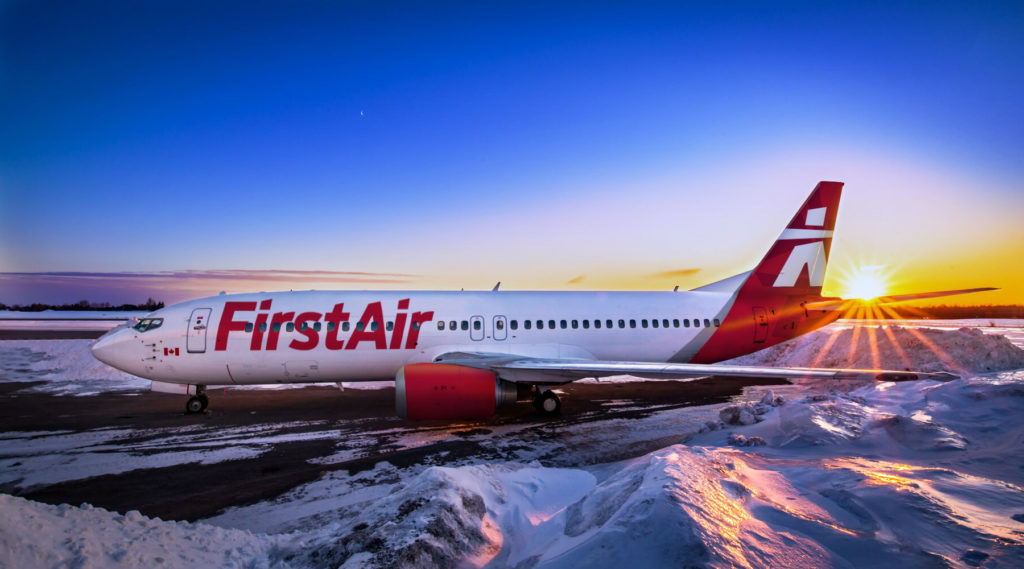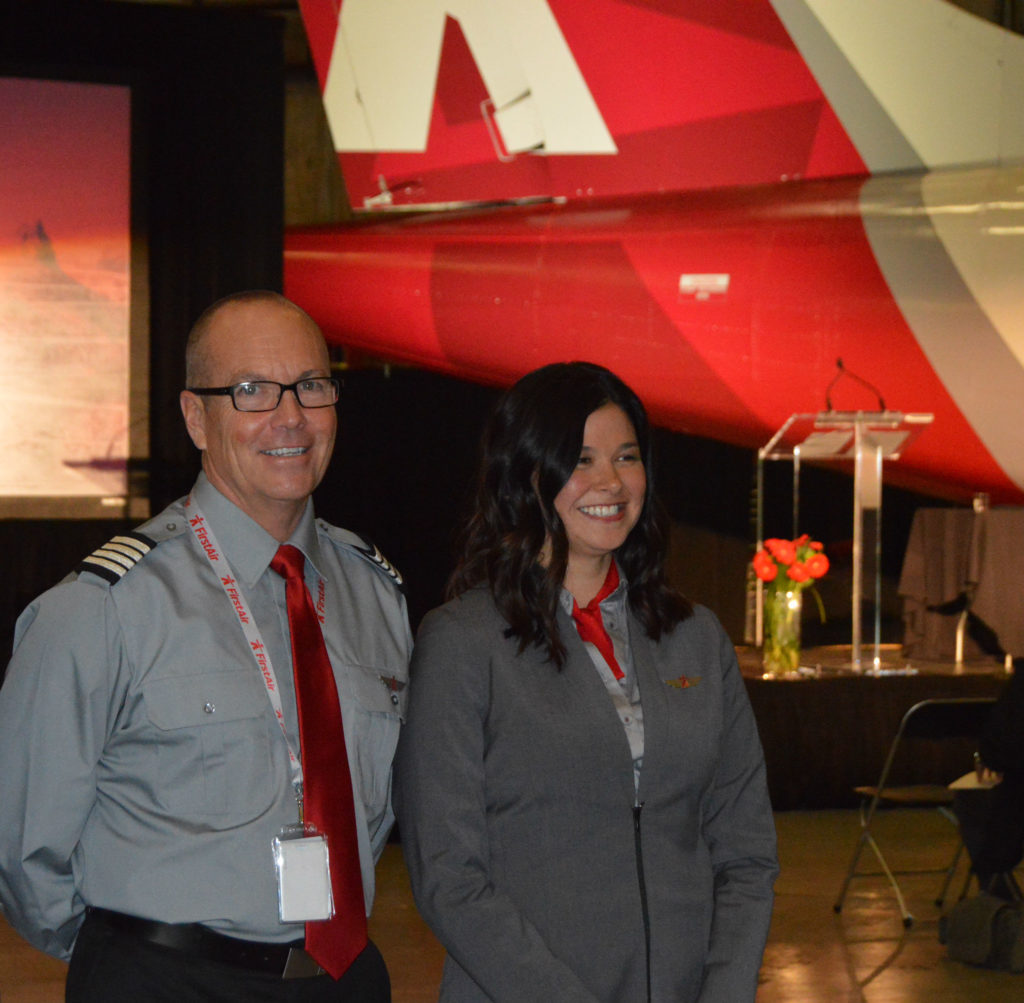Estimated reading time 6 minutes, 57 seconds.
Looking to the future as the “preeminent” carrier in the Canadian Arctic, First Air has reached deep into the past with a rebranding initiative featuring the Inukshuk, the iconic stone landmark built by Inuit for centuries and now copied worldwide.

“These stone statues have always been instrumental in our survival as Inuit,” said First Air chairman Johnny Adams during an Oct. 12 unveiling at the carrier’s Ottawa hangar.
“They guide us throughout the Arctic, they protect us in showing us where the best fishing and hunting spots are, and they’re a vivid symbol of our connection to the land. It’s very fitting.”
Spread across the vertical stabilizers of First Air’s Boeing 737-400s and ATR 42 turboprops, the white Inukshuk on a red background is a key element of an aggressive rebranding effort, which also includes other new livery, aircraft interiors and crew uniforms.
Owned since 1990 by the Makivik Corp.–an Inuit-controlled conglomerate headquartered in Kuujjuaq, Que.–First Air began scheduled passenger service in 1973 as a division of Bradley Air Services, which had operated in the North since 1946. Its founder, Ottawa native Russ Bradley, helped develop the “tundra tire” which revolutionized northern flying.
Adams, who has some 4,000 hours in fixed- and rotary-wing aircraft and used to run his own charter operation, pointed out that First Air is “an essential service” in the Arctic, serving 35 northern destinations with 17 aircraft.
It carried more than 200,000 passengers and more than 17 million kilograms of cargo in 2016, but Adams said it also helps scattered families to keep in touch in a region which has no highways and provides critical medical flights to the south.
Two markets he’d like to see more activity in are the resources/infrastructure sector and tourism.

He said the federal and Nunavut governments promote northern business, giving northern-based companies priority on contracts but not the scheduled carriers.
“But this policy unfortunately does not apply to the scheduled airlines, so a lot of the time the contractors bringing their own planes without using us. In order for us to develop, I wish the government will be able to revisit that; they’re supporting companies within but they’re not supporting companies that provide service to them on a daily basis. We hope this will change in the near future.”
As for tourism, he and First Air president Brock Friesen are hoping to add the Arctic to a growing market for exotic destinations. The company’s new tagline is “Fly the Arctic.”
Friesen, an industry veteran (Canadian Airlines International, Star Alliance, Air Malta and a Ghanaian regional carrier, Starbow), was appointed in March 2013 and has been instrumental in pulling First Air out of a downward spiral.
Nowadays, Friesen told the hangar audience Oct. 12, putting First Air’s finances in shape and modernizing the fleet “has provided us the flexibility we were looking for to strengthen our service options to northern communities.”
The addition of new ATR 42-500s next spring will mean daily scheduled service from Edmonton, Alta., to Yellowknife, N.W.T., and points further north.
He said the “grand makeover” of the last nine months reflected the “tremendous passion of our employees” and while “all of us wanted our new look to be more modern . . . we wanted to represent who we are and where we fly.
“We wanted to stand out in the snowy Arctic landscape or at a busy Montreal or Ottawa airport. We want to get noticed. We want the brand to bring us more business.”
Upmarket catering akin to what many larger carriers offer in business class won’t hurt either.

Friesen said the rebranding flowed from consultations with more than 180 persons, including employees, customers and Inuit elders. The general response to a preview last spring, coordinated by Ottawa-based InnovaCom Marketing and Communication was “just one word: beautiful.”
The fact that Inuksuit are built on site by different people gave First Air considerable leeway when it came to designing the logo.
“Just as with the maple leaf, no two are the same,” said Friesen. “I knew we had the winning design when I showed it to an elder in Cambridge Bay. . . . She pointed to it and said, ‘we never go anywhere without the Inukshuk showing the way and it looks great in red.’
“I knew at that point we had . . . the right image for First Air. . . . Why red? It’s simple. We’re Canada’s preeminent carrier to the Arctic and we wanted to wrap ourselves in . . . white and red, strong Canadian colours.”
Equally important, he noted, is that red shows up well against the snow in a region where “for much of the year the background is very white.”
Moreover, “it shows up well at southern airports.”








